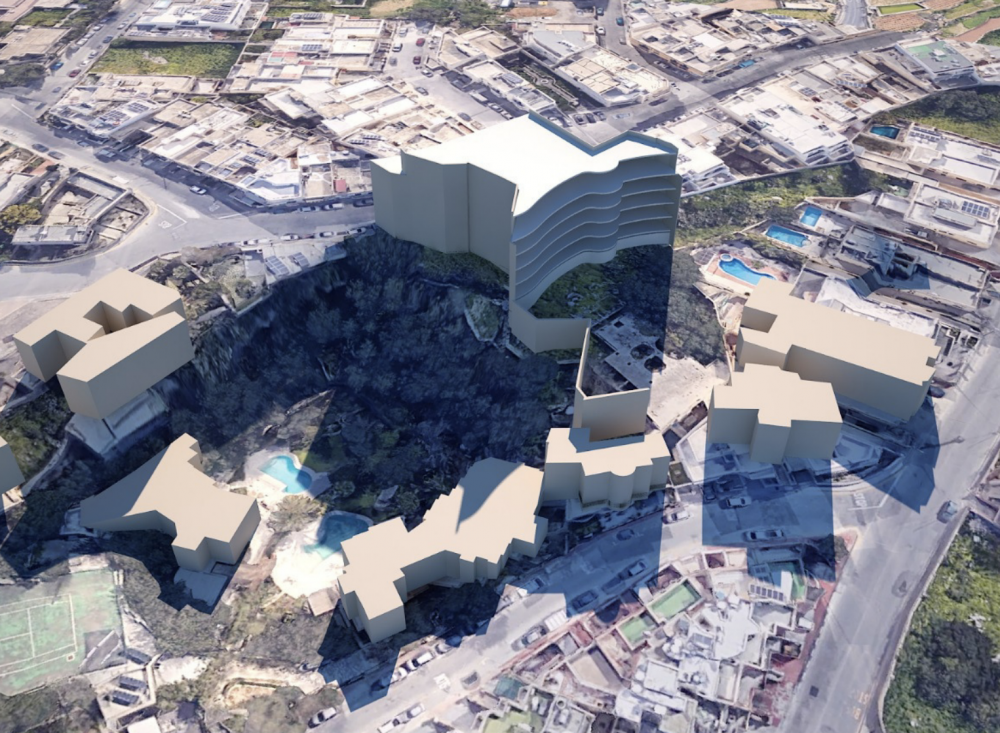Mensija up in arms as Portelli project breaks up streetscape and threatens cave and trees
Portelli’s Mensija project has residents up in arms: the shade falls directly onto the nearby houses, and residents claim it will endanger the Ghar Harrub cave

The Environment and Resources Authority has called for a geo-technical study to assess the impact of excavations for a proposed residential development in Mensija on the Ghar Harruba cave, which is located on an adjacent property.
Residents have also presented a study showing the extent of shading on a “mini forest” consisting of 30 old carob trees.
The six-storey project is being proposed by developer Joseph Portelli, who is also building the 32-story Mercury Tower in Paceville. The 18-apartment block will have four levels and an additional two storeys for luxury penthouses.
The building is just a short distance away from the picturesque Mensija chapel, and just one property away from the house of architect Ray Demicoli, whose property could be affected by the shading of the building.
Indeed Demicoli was originally the architect of the project. But he has now been replaced by a new architect.
A carpark for 37 cars will be excavated on three levels below the street.
Plans submitted by the developer’s architect indicated that no excavations will be carried out in the area immediately adjacent to the cave.

But according to ERA, the excavation works which are being proposed in close proximity to the edge of the doline – a depression or hole in the ground caused by some form of collapse of the surface layer – are still of “significant concern”.
The application has been suspended after the ERA asked the developer to conduct geo-technical studies, but it can be reactivated any time.
The large cave forms part of a more extensive circular cavity with relatively abrupt sides, which is found immediately adjacent to the site in question. “This well-developed geo-morphological feature, which is similar to other well-known examples such as Il-Maqluba, should be safeguarded against adverse impacts of nearby development,” the ERA said.
The owners of an adjacent property are also objecting to the development, warning that there are cracks in the cave found in the property, which could destabilise its roof.
They have presented a study conducted by an architect on the shading created by the proposed development, saying the development will cast “long and continuous shadows” on what they described as a ‘mini-forest’ consisting of 30 carob trees, while expressing concern about the negative ecological impact.
More than 300 objections have been presented against this development. The objectors also include the Archdiocese of Malta which has expressed concerns over the potential damage to the chapel in Triq is-Santwarju.






.jpg)












.jpeg)


